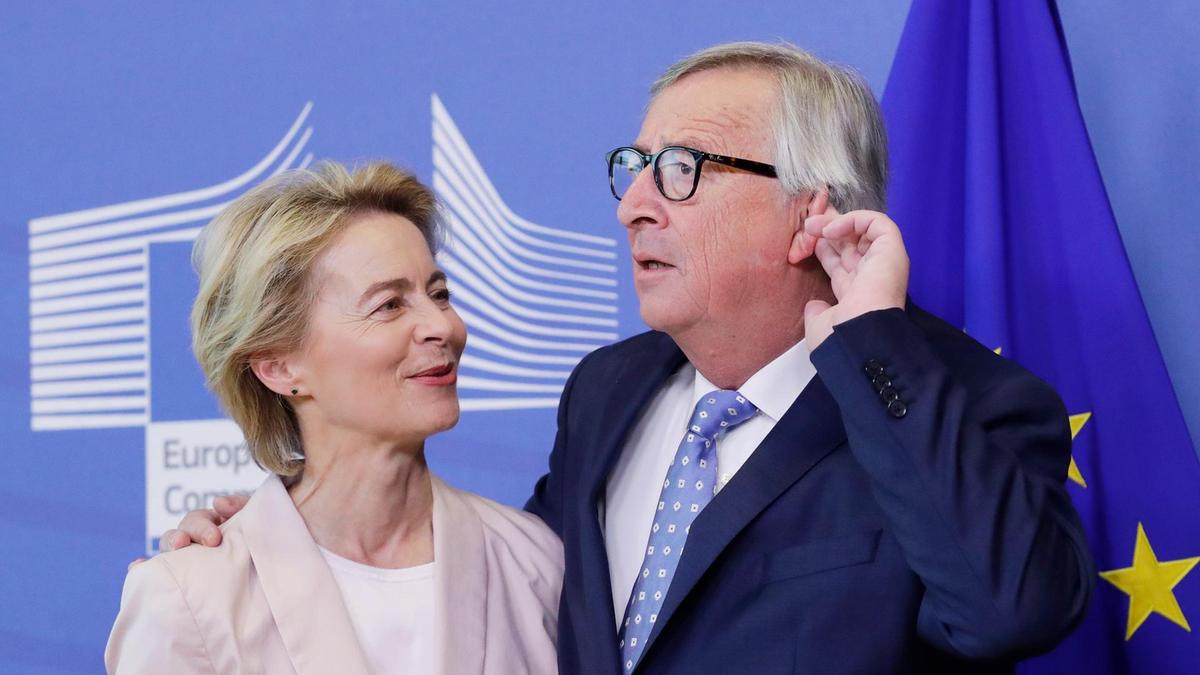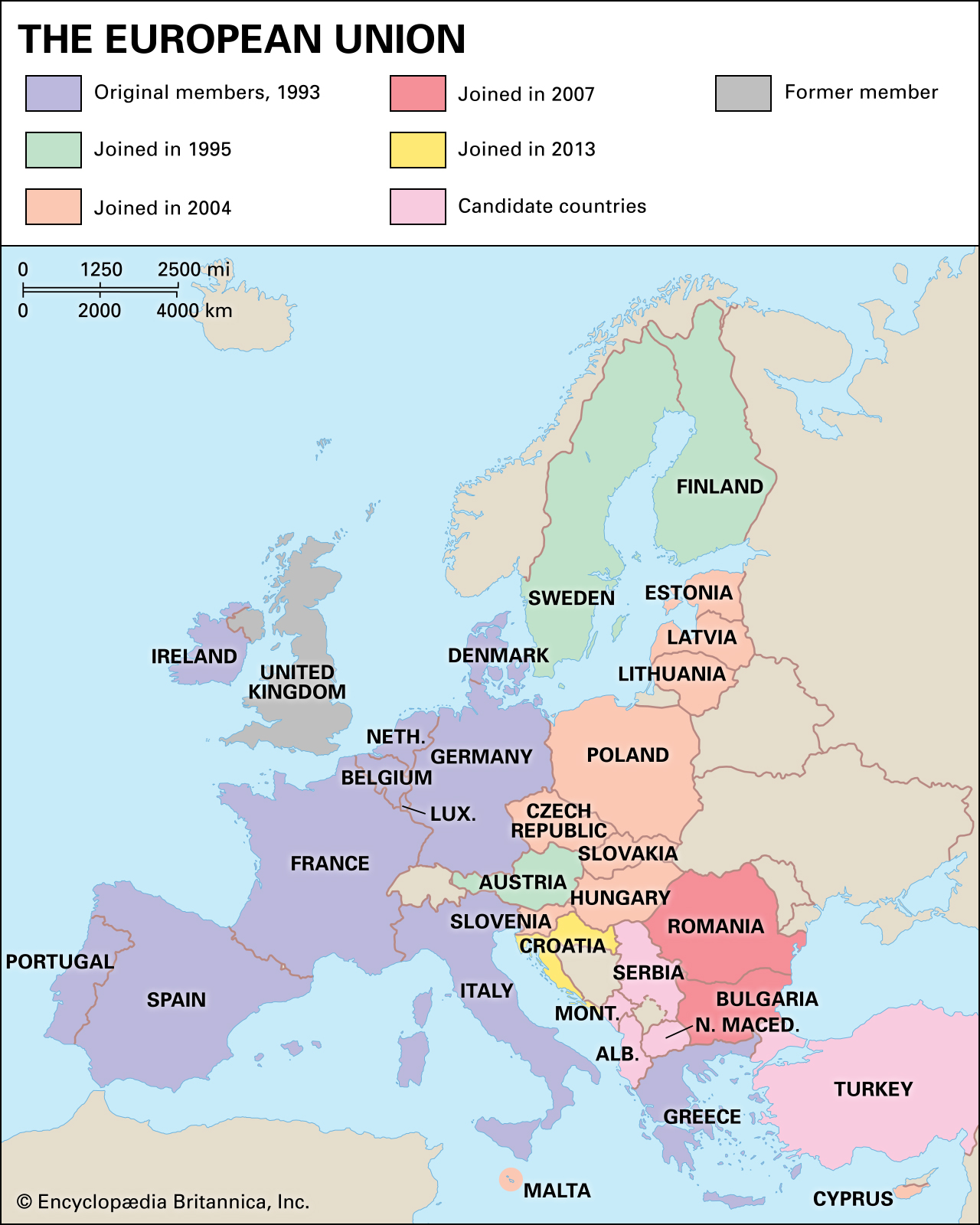The European Union (the EU) is characterized by a purposeful diffusion of political authority between supranational and intergovernmental institutions. Based on the idea of shared leadership, it relies on a delicate institutional balance guarding declared equality between its ever more diverse members and managing potential and real tensions between the more and less populated states. Such tensions are present in any federal construct and have been a key concern since the ‘original six’ founded the (West) European Coal and Steel Community (the ECSC) in 1951 (the Benelux, West Germany, France, and Italy).
The formal facts and official EU’s propaganda about itself is something that we all know and we agree that is an admirable and amazing concept, that all these different people (27 Member States today) from such colorful nations decided to live together with the main purpose of having a big and united community with trying to live in peace and comfort and to enjoy the developed medical and educational systems. It is all we always read in the press and see on TV, but there were no public releases about a single wrong or questionable decision or action taken by the EU.
So, what is more, interesting now: let is have a look at some different opinions. I do not want to write about a “reality” because reality is such a subjective and questionable field, but I would like to draw the attention of a critical approach to the studies on the EU and European integration within the economic-political umbrella of the EU.
What is the EU?
All theoreticians of the European unification within the umbrella of post-WWII (West)European Communities (today the EU) will stress four crucial points of the importance of this process:
- It will bring to an end the millennial war-making between major European powers.
- A unified Europe will anchor the world power system in a polycentric structure with its economic and technological might and its cultural and political influence (probably together with the rise of the Pacific states).
- It will preclude the existence of any hegemonic superpower, in spite of the continuing military and technological pre-eminence of the USA.
- The European unification is significant as a source of institutional innovation that may yield some answers to the crisis of the nation-state.[i]
As a matter of very fact, the European unification after WWII grew from the convergence of alternative visions, conflicting interests between nation-states, and between different economic and social actors. The very notion of Europe, as based on a common identity, as highly, however, questionable. Nevertheless, the European identity, historically, was racially constructed against “the others”, the “barbarians” of different kinds and different origins (Arabs, Muslims, Turks, and today Russians) and the current process of unification is not different in this sense. The unification was made from a succession of defensive political projects around some believed common interest (for instance, the Russian “threat” after the Cold War 1.0 and especially the 2014 Crimean Crisis) among participating nation-states. The process of unification, therefore, was aimed at defending the participating countries against perceived “threats” and in all of these cases, however, the final goal was primarily political but the means to reach this goal were, mainly, economic measures. As another matter of fact, from the very start of the process of the European Unification after WWII, NATO provided the necessary military umbrella.
The European debate about competing visions of the integration process was three-folded:
- The technocrats who originated the blueprint of a united Europe (particularly the French Jean Monnet) dreamed of a federal state what practically meant the accumulation of considerable influence and power in the hands of the European central bureaucracy in Brussels, Strasburg, and Luxemburg.
- The President Ch. De Gaulle (1958−1969) emphasized the opinion concerning the transfer of sovereignty to be known as intergovernmental and, therefore, it was placing the European wide-decisions in the hands of the Council of heads of executive powers from each Member State. De Gaulle tried to assert the European independence vis-à-vis the USA and this is why France vetoed twice in 1963 and 1967 the British application to join the EEC as considering that the UK’s close ties to the USA would jeopardize the European autonomous initiatives.
- Indeed, the UK represented the third vision of European integration focusing on the development of a free trade area without conceding any significant political sovereignty. When Great Britain joined the EC (together with Ireland and Denmark) in 1973, after de Gaulle’s departure, this economic vision of the European integration (in fact, the EFTA) became predominant for about a decade.
Nevertheless, the original winning plan of Jean Monnet was from the very beginning to create a federal European supranational state – the United States of Europe into with will be merged the majority of the European nations including all the time extremely Eurosceptic Great Britain which finally left the EU (the Brexit). This new superstate popularly called United Europe will have one Parliament, one Court of Justice, single currency (the Euro), single Government (today is known as the European Council with its “Politbureau” the European Commission), single citizenship and one flag as the external attribute of the statehood. That has been the plan all along. However, those who favor it knew well that the overwhelming majority of people from Europe would never sincerely accept the European Unification in such a form. They would never willingly surrender their freedoms and national identities in order to become just a province of the European superstate as, in fact, a geopolitical project originally designed against the Soviet Union and its East European satellite states during the Cold War 1.0. So, what did the pro-European politicians in order to realize their geopolitical plan? They simply conspired to keep the truth from the people.
Now, the focal question became: What is the real truth behind the European Union?
 The need to unite Europe grew understandably out of the devastation left behind after two catastrophic world wars. There is clear evidence, both in the successive European treaties themselves and in pronouncements by the would-be designers of Europe, that the European Union was intended from the outset as a gigantic confidence-trick which would eventually hurtle the nations of Europe into economic, social, political, and religious union whether they liked it or not. The real nature of the final goal – a federal superstate as the United States of Europe – was deliberately concealed and distorted. It was to be released in small doses, to condition those who would never have accepted it until it would be too late for the whole process to be reversed or crucially changed.
The need to unite Europe grew understandably out of the devastation left behind after two catastrophic world wars. There is clear evidence, both in the successive European treaties themselves and in pronouncements by the would-be designers of Europe, that the European Union was intended from the outset as a gigantic confidence-trick which would eventually hurtle the nations of Europe into economic, social, political, and religious union whether they liked it or not. The real nature of the final goal – a federal superstate as the United States of Europe – was deliberately concealed and distorted. It was to be released in small doses, to condition those who would never have accepted it until it would be too late for the whole process to be reversed or crucially changed.
Brief historical background
In 1946, ex-British war PM, Sir Winston Churchill delivered his famous Zurich speech calling for the establishment of the United States of Europe but, however, his idea of united (Western) Europe excluded his native country – the UK. At that time, he envisaged West Europe of independent, free, and sovereign states that would rise from the ashes of WWII and reach for a destiny of unprecedented harmony and democracy. Neutral Switzerland, with its centuries-old harmonious co-existence of four languages and cultures (and international money laundering banks), was to be the blueprint for a multilingual and multicultural Europe which would never again see maniac dictators and supra-national demagogues bent on imposing their will on member nations.
Initially, W. Churchill’s vision seemed to be advancing according to the plan. Former Nazi Germany and fascist Italy decentralized political power and became parliamentary democracies. Nazism and fascism became discredited throughout Europe like Communism in its western part.
However, soon, the events took a different turn. The Schuman plan of 1950 proposed the supra-national pooling of the French and German coal and steel industries as a means of forging the European economic unity (the 1951 ECSC by the Treaty of Paris). The two economies were interwoven to such an extent that a new war between these traditional enemies became virtually impossible.
The European Economic Union (the EEC), established in 1957 by the Treaty of Rome, brought Italy and the three Benelux countries into the closer union with France and Germany but represented a further step towards a pan-European economy by tying economic development to the city of Rome.[ii] Significantly, the Treaty of Rome also gave Europe a sense of supranational religious unity and the Roman Catholic Church the protection against the existent threat of the spreading of Communism outside of East-Central Europe.
1962 was the year of the Common Agricultural Policy resulting in the creation of a common market (transformed in 1993 into the European Single Market – the ESM) with price-fixing – a further step towards economic uniformity and, basically towards the command economy which was at the same time so heavily criticized by the Western liberal democracies in the cases of the economies of the so-called real socialism. Nevertheless, in the same 1962, year, some Western technocrats recognized the EEC as a project that is already much behind simply and economically united Europe with the comments that fascism in Europe is about to be reborn in respectable business attire, and the 1957 Treaty of Rome will finally be implemented to its fullest extent. Some of them shared the opinion that the dream of a medieval Holy Roman Empire of the German Nation (962−1806) is returning to power to dominate and direct the so-called forces of the Christian mankind of the Western world. Simply, such an idea was not dead yet but still stalks through the antechambers of every national capital of continental Western Europe, in the determination of the leaders in the common market to restore the Holy Roman Empire of the German Nation with all what that means.[iii] Surely, West Germany, constrained in its international role and influence after 1945, saw the European unification as a very convenient international platform to pursue its own foreign policy.
 Nevertheless, the word “economic” was ominously dropped from the official title of the community in 1967 in favor of the description of it just as the European Community (the EC) meaning that the integration process is now directed toward political direction what was clearly seen in 1979 when the first direct elections to the European Parliament in Strasbourg have been organized. Even the former European Assembly was renamed into the European Parliament in order to stress a clear direction toward the creation of a supranational political entity – state.
Nevertheless, the word “economic” was ominously dropped from the official title of the community in 1967 in favor of the description of it just as the European Community (the EC) meaning that the integration process is now directed toward political direction what was clearly seen in 1979 when the first direct elections to the European Parliament in Strasbourg have been organized. Even the former European Assembly was renamed into the European Parliament in order to stress a clear direction toward the creation of a supranational political entity – state.
The policy of enlargement continued with Greece joined in 1981, and Spain and Portugal in 1986, when in the same year the Single European Act was signed to prepare the EC for the transformation into the EU – a higher level of economic, financial, social, legal, legislative, and above all political integration. In other words, the Single European Act meant the gradual transfer of executive, legislative, and judicial powers from the Member States to the central authorities of the EC and since 1993 of the EU. Consequently, the EU could make ever-increasing political inroads into the national sovereignty of the Member States and the London-Dublin conspiracy attempted to force the British people of Northern Ireland by stealth and terror towards a united Ireland under the European rule, while arrogant and spineless politicians in Westminster continued politely to play the enemy’s game, or, as Dr. Paisley once put it metaphorically, to “feed the brute instead of slaughtering it”.
When the (in)famous Maastricht Treaty on the European (political) Union was signed in February 1992 (to come into force in November 1993) with the ultimate aim of transforming the EC into a federal superstate – now significantly redesigned as the European Union (EU) – many of the politicians elected to Brussels, including those from Great Britain, fell for the confidence trick.
To be continued
[i] Featherstone K., Radaelli C. M., The Politics of Europeanisation, N.Y.: Oxford University Press, 2003; Cini M., European Union Politics, N.Y.: Oxford University Press, 2004.
[ii] In fact, there were two Treaties of Rome signed on March 25th, 1957: 1) Creating Euratom, to coordinate policy in nuclear energy, the new strategic industry; and 2) Creating the European Economic Community, oriented towards improving trade and investment but as well as towards further political steps in the creation of the European superstate.
[iii] See more in [Professor Arthur Noble, “The Conspiracy Behind the European Union: What Every Christian Should Know”, Lecture delivered at the Annual Autumn Conference of the United Protestant Council in London on Saturday, November 7th, 1998].














Comments